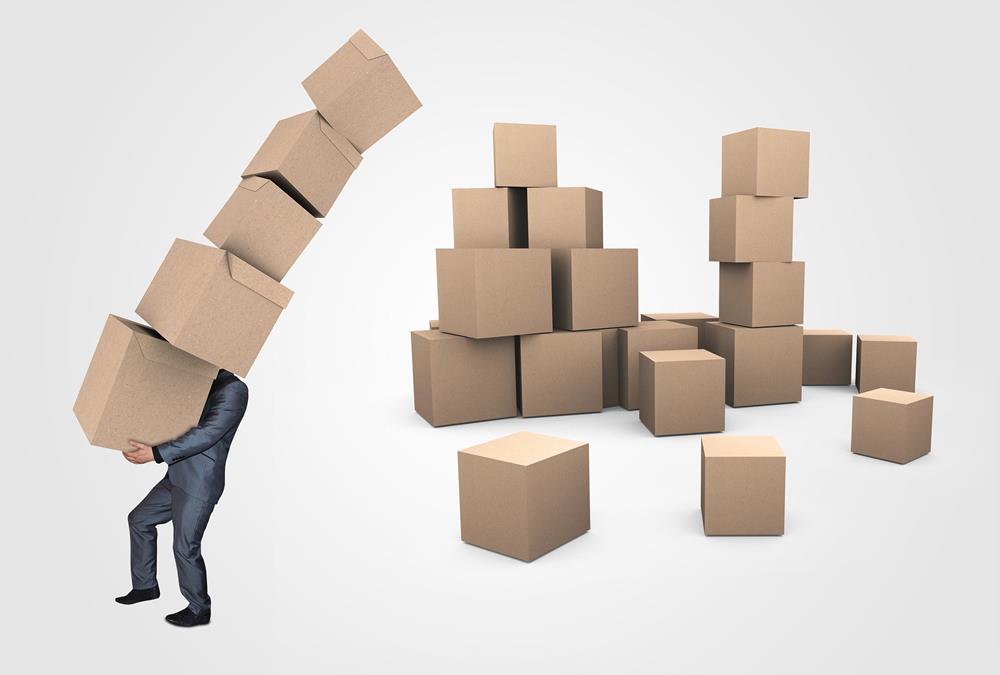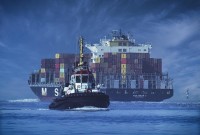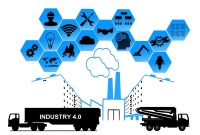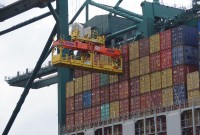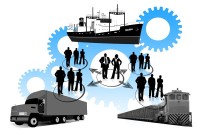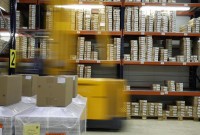- Home
- Business Processes
- Industry Knowledge
- Aerospace Industry
- Automotive Industry
- Banking Domain
- BFSI Industry
- Consumer/ FMCG Industry
- Chemicals Industry
- Engineering & Construction
- Energy Industry
- Education Domain
- Finance Domain
- Hospitality Domain
- Healthcare Industry
- Insurance Domain
- Retail Industry
- Travel and Tourism Domain
- Telecom Industry
- Leadership Skills
- eLearning
- Home
- Business Processes
- Warehouse Management
- Inbound Putaway Process
Inbound Putaway Process
After products have been received and passed a quality inspection, they need to be stored so that you can find them when you need them. This process is called putaway. The spot where you store a particular product is called a location. One section of a warehouse might have small locations for light items; another area may have large locations on the floor for heavy items.
After products have been received and passed a quality inspection, they need to be stored so that you can find them when you need them. This process is called putaway. The spot where you store a particular product is called a location. One section of a warehouse might have small locations for light items; another area may have large locations on the floor for heavy items. This type of division is called slotting. To minimize the distances that people will travel, distribution centers should be laid out so that the products shipped most frequently are closer at hand and those shipped less often are farther away.
Warehouse put-away
The inbound material is first received at the default receipt location as specified during the warehouse layout. The next step is for the warehouse worker to move the registered quantities from the receiving location to a regular storage location. Warehouse operations typically require that the quantities be moved from the receiving dock to the regular warehouse storage, so that the subsequent picking processes can occur. This is known as put-away process and it refers to all the processes that happen between receiving goods from vendors and having them all put away into their assigned places. Having a put-away process simplifies the tracking of storing items, reduces the risk of misplacing or losing items, and keeps your warehouse clean and organized.
Inventory Status is Updated
Inventory should be considered available or unavailable for certain operations. For example, inventory should be unavailable for orders until putaway is complete. As soon as putaway is complete, the inventory should become available for orders automatically, without any intervention from users.
To facilitate this tracking, different Inventory Statuses are assigned to inventory. The Inventory Status of the inventory changes at different stages like when inventory is received, when inventory is awaiting inspection, when inventory is moved to storage etc. Inventory Statuses can also be associated with zones, for example, when product moves to QC zone, its Inventory Status changes to the Inventory Status associated with the QC zone, which may indicate that the product is undergoing QC. Items are available for sale After the inbound process is completed, items become available for sales and other outbound and internal operations.
Move Request
Move requests are created to ensure that inventory is moved from one to location to another, within a warehouse, in an automated manner. These are not representative of transfers between warehouses, which are actual shipments.
Slotting Process
Warehouses re-slot forward pick zones every season to utilize the most cost-effective and efficient locations to store inventory. Slotting is performed based on the velocity of the items. Slotting ensures that items with highest velocity are placed in locations belonging to the Golden zone. Locations in the Golden zone are easily accessible. Therefore, the picking efficiency of the picker is increased when picking inventory in this zone.
Related Links
You May Also Like
-
The Outbound process starts with routing the shipments. The Outbound execution process starts from the point when pick tasks are completed for an outbound shipment and ends at the point where the outbound packages are loaded into trailers. The Warehouse Outbound process includes managing and controlling outgoing materials starting from the download of orders through to the shipping of products from the warehouse.
-
Warehouse management and distribution logistics involve the physical warehouse where products are stored, as well as the receipt and movement of goods takes place. Warehouse management aims to control the storage and movement of products and materials within a warehouse. These operations include the receipting of inwards goods, tracking, stacking and stock movement through the warehouse.
-
Types of Order Picking Methods in the Warehouse
There are many different types of picking in a warehouse and each one works as a customized solution for each business. Depending on the size of your warehouse and inventory, the manpower you have on hand, and the number of customer orders made each day, there may be certain methods that are more efficient for you than others.
-
What is a Warehouse & why companies need them?
All organizations hold stocks. In virtually every supply chain, gaps exist between when something is produced and when a customer is ready to buy or receive it. Stocks occur at any point in the supply chain where the flow of materials is interrupted. This implies that products need to be stored during this period of gap.
-
Warehouses can be places where piles of packed or loose products occupy space. If left disorganized, it will become very challenging to identify products for packing or picking. Hence, proper organization of warehouse is very important. Warehouse labeling systems eliminate this problem by making sure products are easily identified and managed during the warehousing and shipping process. Labeling is the most functional and cost-effective way to keep your warehouse organized and operating efficiently.
-
One of the warehousing best practices that retailers like Walmart, Amazon, and Target have adopted is known as cross-docking. During this process the inbound products are unloaded at a distribution center and then sorted by destination, and eventually reloaded onto outbound trucks. In real parlance, the goods are not at all warehoused but just moved across the dock (hence the name).
-
Types of Inventory Count Processes
While dealing with lots of inventory in a warehouse, lots of things can go wrong. Shipments may not have the right number of units in them, or they could get damaged somewhere along the supply chain. Discrepancies in the stock may arise as part of every inventory control, and need to be corrected immediately after the inventory control procedure has been finished.
-
Resource Planning is the process of planning for expected workload and determining the number of resources required to complete each activity in the warehouse. There are many types of warehouse positions, and they also vary by the employer, the scale of operations and location. Discussed here are generic positions applicable to warehouse management processes.
-
Before shipping, businesses need to make sure that the items will arrive in good condition. Packaging is a form of protection against environmental threats that the product will face from the time it leaves warehouse facility until the time it reached the customer. The packaging is intended to provide protection for the item as it is being handled in the warehouse or when the item is being shipped.
-
At a high level, the essential elements in a warehouse are an arrival bay, a storage area, a departure bay, a material handling system and an information management system. As part of the process for enabling a warehouse layout, you must define warehouse zone groups, and zones, location types, and locations.
Explore Our Free Training Articles or
Sign Up to Start With Our eLearning Courses

About Us
Learning
© 2023 TechnoFunc, All Rights Reserved
